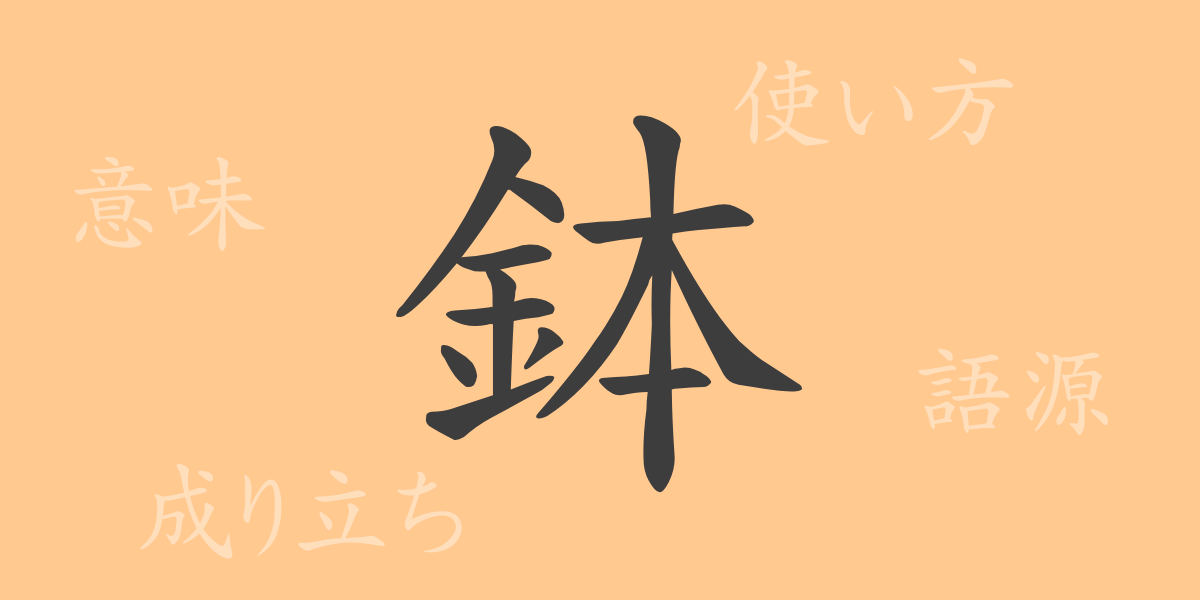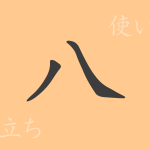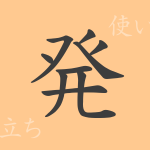In Japanese culture, *kanji* characters are more than just letters; each one holds deep meanings and historical significance, closely connected to the daily lives of the Japanese people. This time, we focus on the commonly used *kanji* “鉢 (hachi)” which frequently appears in everyday life. We will delve into its origins, meanings, usage, and explore the idioms and proverbs associated with this single character to uncover its profound world.
Origins of 鉢 (*Hachi*)
The *kanji* “鉢 (hachi)” originated from ancient characters representing a container used for processing metals. It evolved from pictographs depicting a “kama (かま, kettle)” used for melting metals, eventually forming the character “鉢 (hachi).” This evolution illustrates how characters were closely tied to everyday tools and the lifestyles of ancient people.
Meaning and Usage of 鉢 (*Hachi*)
The *kanji* “鉢 (hachi)” primarily refers to a deep container made of metal or ceramics. In Japan, it is commonly used to describe flower pots (*植木鉢, uekibachi*) and various types of bowls or dishes. Additionally, “鉢 (hachi)” can be used metaphorically to indicate the center or core of an issue, showing its versatile application in different contexts.
Reading, Stroke Count, and Radical of 鉢 (*Hachi*)
The *kanji* “鉢 (hachi)” has unique features in both its form and pronunciation:
- Reading: It is read as “ハチ (hachi)” in *on’yomi* (Chinese reading) and does not have a specific *kun’yomi* (Japanese reading).
- Stroke Count: “鉢 (hachi)” consists of 13 strokes.
- Radical: The radical is “金 (かねへん, kanehen),” which is associated with metal.
Idioms, Sayings, and Proverbs Involving 鉢 (*Hachi*)
The *kanji* “鉢 (hachi)” frequently appears in various Japanese idioms and sayings. For instance, “鉢合わせ (*hachi awase*)” means to unexpectedly encounter someone face-to-face, while “鉢巻きを締める (*hachimaki o shimeru*)” represents the act of renewing one’s determination. These expressions vividly reflect aspects of Japanese life and sentiment.
Conclusion on 鉢 (*Hachi*)
The *kanji* “鉢 (hachi)” is deeply ingrained in the daily lives of Japanese people, reflecting its form and meanings. From referring to simple containers to expressing various concepts and phrases, “鉢 (hachi)” highlights the richness of the Japanese language and the depth of *kanji* culture. Its appearance in everyday idioms and proverbs makes it a *kanji* worth paying attention to in the future.

























